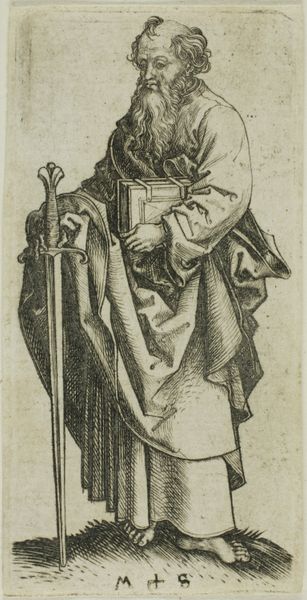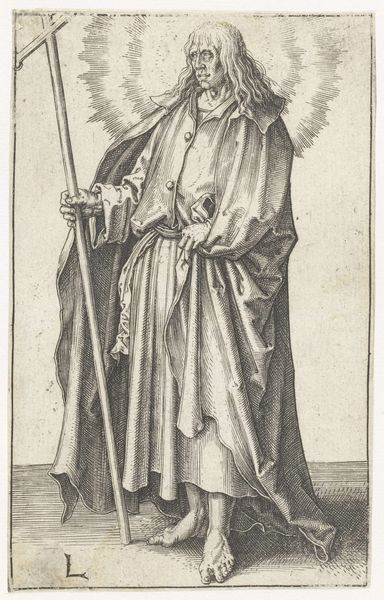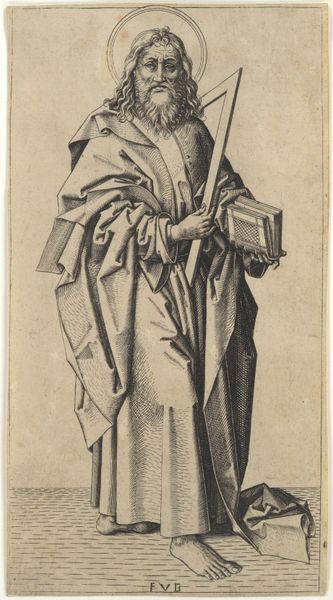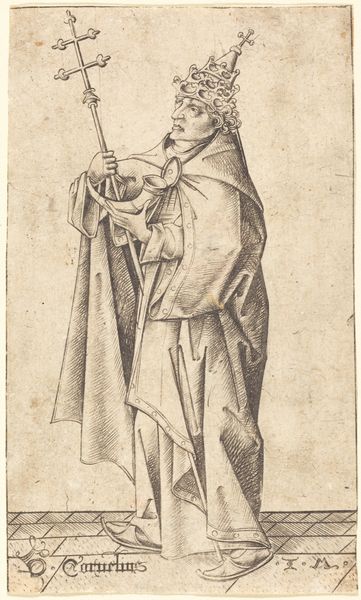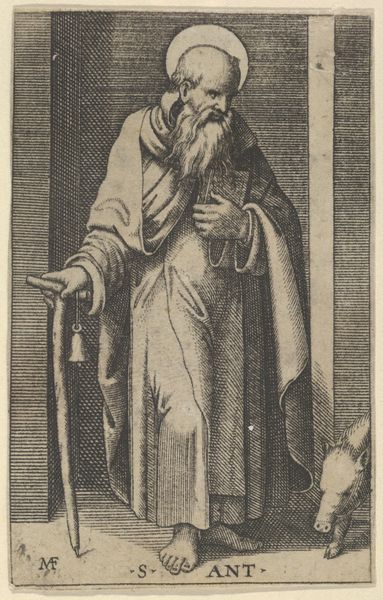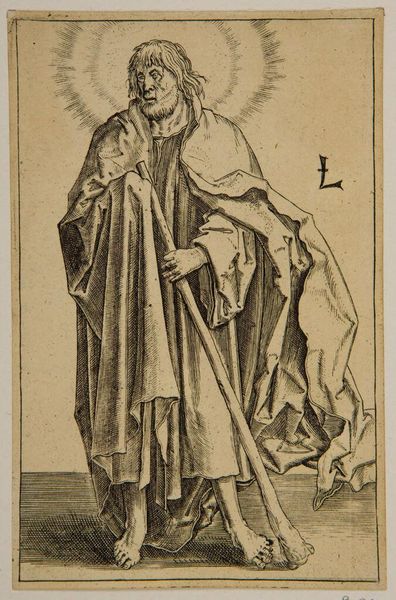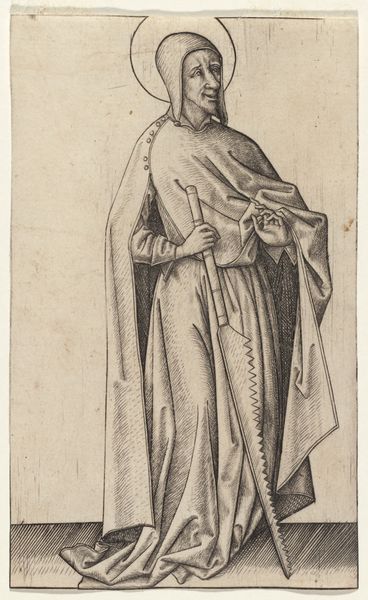
print, engraving
#
pencil drawn
# print
#
figuration
#
line
#
portrait drawing
#
history-painting
#
northern-renaissance
#
engraving
Copyright: National Gallery of Art: CC0 1.0
Editor: This is Lucas van Leyden’s engraving of "Saint Matthew," created around 1510. The level of detail achieved with simple lines is captivating, and Matthew seems to gaze pensively into the distance. What story do you see in this piece? Curator: Van Leyden created this Saint Matthew during the Northern Renaissance. Notice how this image exists as a print - that is a key socio-political factor! It made it possible for such images to spread quickly through society. He's part of a set depicting the apostles, meant for a growing urban audience with access to such printed images. Editor: How were such images consumed at the time? Curator: This work represents a fascinating moment where religious imagery meets a burgeoning market for art. Disseminated in print, individual devotion became coupled with a developing taste for collecting and connoisseurship. Consider the rise of printmaking—it mirrors the democratizing potential of the Reformation brewing at the time. How does knowing this was reproducible impact your view of the work? Editor: It makes me wonder if prints like this contributed to new forms of personal religious expression or were simply another way for the church to disseminate approved images? Curator: An interesting question! Certainly, both possibilities exist. And art patronage became distributed and uncontrolled in the sense that such production went directly to a broad, anonymous market, rather than to fulfill an aristocratic or church commission. Now, look closer at his pose; he isn't posed regally, like some paintings that would be displayed at the altar of a church; is there anything surprising about that? Editor: Yes, it humanizes him somehow, makes him less remote. Thank you. Thinking about the changing landscape of religion and art ownership makes this print far more complex than just a religious image.
Comments
No comments
Be the first to comment and join the conversation on the ultimate creative platform.
